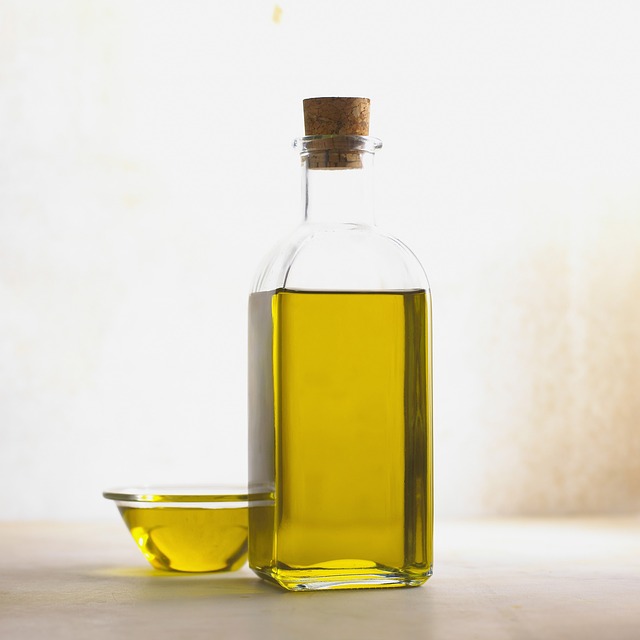Lara Pizzorno is the author of “Your Bones: How You Can Prevent Osteoporosis and Have Strong Bones for Life – Naturally” and a member of the American Medical Writers Association with 29 years of experience specializing in bone health.
Recently we asked Lara if she would help provide a series of short, ongoing videos to help you (our customers and readers) stay up to date on the latest facts and science related to bone health.
In this latest video, Lara discusses how much vitamin K1 you need and what food sources you can get it from. Watch the video below (or read the transcript provided) and let us know what you think in the comments. 🙂
Hello, my name’s Lara Pizzorno. I’m the author of “Your Bones,” and I’m here to share with you some information that I hope will help you to have healthier bones. In this video, I’d like to talk with you about:
- Dietary recommendations for Vitamin K1,
- Which foods are richest in K1,
- And why refined oils do not contain usable K1.
- I’d also like to talk to you about how much vitamin K1 you need,
- And where you can get it.
So if you eat a healthy diet that includes lots of leafy greens, your needs for K1 can be easily met.
dataK1 is present in high amounts in leafy greens, like spinach, kale, Swiss chard, collards, and parsley, and broccoli, and it’s also found in oils derived from plants.
In the standard American diet, aptly called the SAD, Standard American Diet, S-A-D. However, few folks are eating leafy greens, instead they’re eating packaged highly processed foods, most all of which contain soybean or canola oils.
So canola and soybean oils are the primary source of Vitamin K1 in the American diet, not leafy greens.
The kicker here is that when these oils are processed as they are in packaged foods, they are often at least partially hydrogenated. And hydrogenation changes the K1 in these oils from phylloquinone, it’s natural form, into an unnatural form called dihydrophylloquinone. Not only is dihydrophylloquinone not as well absorbed as phylloquinone, dihydrophylloquinone has much lower biological activity and it is thought to be more rapidly metabolized and excreted than is phylloquinone, which is the natural form.
When dihydrophylloquinone is consumed, activation of the liver proteins needed to form clotting factors is greatly reduced, and even when large amounts of dihydrophylloquinone are consumed, so some is left over, and gets sent to the intestines, where healthy bacteria would convert it, if it were phylloquinone, into Vitamin K2, any dihydrophylloquinone that makes it to the intestines is ignored by these bacteria. It does not get converted into the MK4 form of K2.
Data collected on 2,544 people, whose average age was 58.5, and who were participants in the Framingham Offspring Study, which we talked about a little bit in the preceding videos, showed that:

subjects with the highest intake of Vitamin K1 from hydrogenated oils, the type of oils typically used in processed and fast foods, in other words, those with the highest intake of dihydrophylloquinone, had the lowest bone mineral density at the neck, hip, and spine.
Earlier research that was published in the American Journal of Nutrition in 2001 had also looked at the effects of dihydrophylloquinone on bone formation and bone resorption or bone breakdown. This research showed higher levels of a protein called P-I-V-K-A, PIVKA-II, that appears in the blood when Vitamin K is absent, or even deficient. PIVKA-II is an abnormal version of the coagulation protein, prothrombin.
If you listen to our earlier videos on Vitamin K, (here and here) you may remember that Vitamin K1’s first job is to activate the proteins responsible for helping our blood to clot so that we don’t bleed out, just from a paper cut. PIVKA-II is an abnormal version of one of these proteins, and it is detected in the blood of people with a deficiency of Vitamin K due to poor nutrition or malabsorption, or if they’re taking some medication that inhibits the actions of Vitamin K.
When people consume dihydrophylloquinone, rather than the natural, normal form, phylloquinone, PIVKA-II appears in their blood, and it’s not a good sign. Hydrogenated oil is, unfortunately, everywhere in the U.S. food supply in processed foods. During the hydrogenation of phylloquinone rich oils, phylloquinone is converted to dihydrophylloquinone. Even short term dietary restriction of phylloquinone has been shown to increase several measures of bone turnover, or bone resorption. In other words, inflammatory signaling molecules called cytokines increase, and these increased osteoclast activity, and thus bone resorption and turnover.
In studies, short term phylloquinone repletion lowers measures of bone turnover, but dihydrophylloquinone doesn’t do this. It has absolutely no beneficial effects on bone, so the take away here, eat leafy greens, and use unrefined, not even partially hydrogenated oils to get your K1. The K1 in partially hydrogenated oils and the hydrogenated oils that are found in processed foods, is not going to help your bones.
In our next video, I’ll share with you how Vitamin K2 works, and what happens when we don’t get enough of this very important nutrient for healthy bones. Thanks for tuning in, and I hope this was helpful for you.
Sources:
Troy LM, Jacques PF, Hannan MT, et al. Dihydrophylloquinone intake is associated with low bone mineral density in men and women. Am J Clin Nutr. 2007 Aug;86(2):504-8. PMID: 17684225
Booth SL, Lichtenstein AH, O’Brien-Morse M, et al. Effects of a hydrogenated form of vitamin K on bone formation and resorption. Am J Clin Nutr. 2001 Dec;74(6):783-90. PMID: 11722960
Vegetable Oil photo via Pixabay





Article Comments